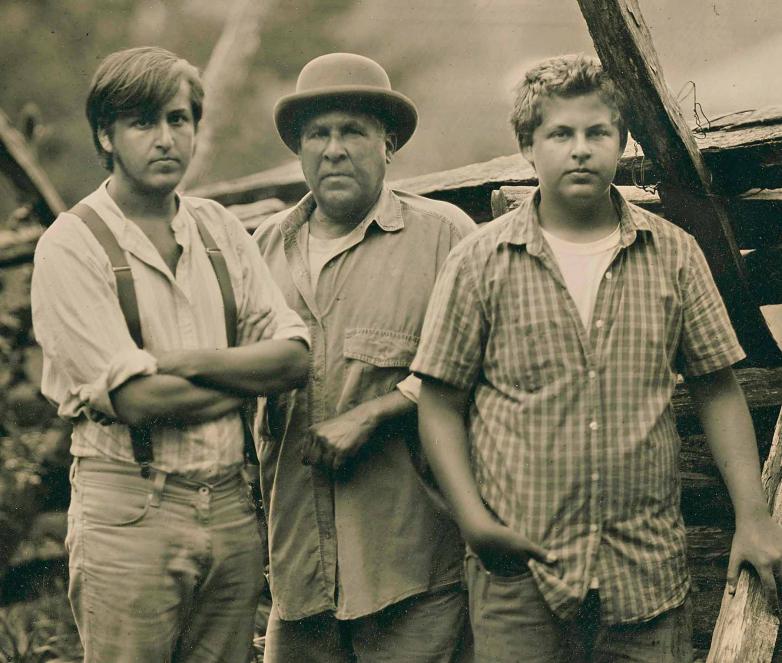“John is one of my favorite persons on the planet,” said commercial photographer Jody Dole, who attended Camp Tintype some years back with his kids. “Brandon at age twelve was the youngest kid to ever attend and has gone on to do a lot of fun stuff with the processes learned from John. His older brother Sam is an avid wet-plate photographer and teaches workshops at a foundation in New York City.”
Joni Sternbach, who specializes in landscape and portrait photography, said, “Learning wet-plate from John is a trip back in time and a very fitting way to learn the process.”
Coffer was born in West Virginia, raised in Las Vegas, and lived for a while in Florida as a portrait photographer, before he had thoughts to drop it all and start a new life. He moved to Lancaster, Pennsylvania, got himself a horse and wagon, and became America’s last itinerant tintype portrait photographer. He did that for seven years, putting 11,000 miles under foot and hoof.
He bought the farm in New York and in 1996 Camp Tintype started in earnest with Coffer offering classes, workshops, and multi-day camps for anyone who wanted to learn early photographic techniques. A day at Coffer’s summer camp might begin at 5:30 a.m. with Rebel the rooster providing the wake-up call and end with cattle wrangling in the evening. In between those times, Coffer shares his rarified knowledge with a small group of dedicated students. “His farm is a photographer’s delight,” said Sternbach, a native New Yorker. There are beautiful haystacks, old cabins, campfires. Campers get to shoot it all.
The wet-plate collodion process was first introduced in 1851 by Englishman Frederick Scott Archer. It’s called ‘wet-plate’ because the plate cannot be allowed to dry during the entire procedure. Once the plate is coated with the collodion solution, it must be immediately sensitized, exposed in the camera, developed, fixed, and rinsed before the plate dries. By 1860 it was the method employed by most photographers the world over and remained the standard for two decades. The famous photographers of 1863—the year in which Coffer insists he doesn’t live—include Carleton Watkins, who took some of the first photographs of Yosemite; Alexander Gardner, who took photos of the execution of Abraham Lincoln’s assassination conspirators; and Mathew Brady, arguably the Civil War’s most famous photographer.


















